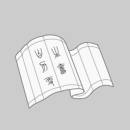
中国第四纪孢粉图鉴
全新正版 极速发货
¥ 548.72 6.9折 ¥ 798 全新
库存4件
广东广州
认证卖家担保交易快速发货售后保障
作者唐领余 等
出版社科学出版社
ISBN9787030624345
出版时间2020-02
装帧精装
开本其他
定价798元
货号1201992793
上书时间2024-06-06
- 最新上架
商品详情
- 品相描述:全新
- 商品描述
-
目录
Foreword 1
Foreword 2
Foreword 3
Preface
Chapter 1 Overview of Modern and Quaternary Vegetation in China
1.1 Northwest Region Lingyu Tang and Caiming Shen (2)
1.1.1 Overview of modern vegetation (3)
1.1.1.1 Gobi Desert in eastern Xinjiang (3)
1.1.1.2 Extremely arid desert scrub in the Qaidam Basin (3)
1.1.1.3 Arid desert scrub and semi-scrub in the Hexi Corridor (3)
1.1.1.4 Forest-steppe and pine-oak forest in a temperate semi-humid and semi-arid transition zone of monsoon climate in the Loess Plateau (3)
1.1.2 Overview of Quaternary vegetation (4)
1.1.2.1 Vegetation and environment since the early Pleistocene in Qinghai region (4)
1.1.2.2 Holocene steppe/meadow succession in the northern Tibetan Plateau (9)
1.1.2.3 Vegetation and environment since the late Pleistocene in the Loess Plateau (11)
1.1.2.4 Vegetation and environment since the early Pleistocene in Xinjiang (14)
1.2 North Region Lingyu Tang, Chunhai Li and Caiming Shen (21)
1.2.1 Overview of modern vegetation (21)
1.2.1.1 Temperate coniferous and broadleaved mixed forest and meadow steppe in Northeast China (21)
1.2.1.2 Valley oak forest, Pinus tabulaeformis forest, and shrub steppe in Liaohe River Plain, North China Plain, South Shanxi Plain, and Central Shaanxi Plain (23)
1.2.2 Overview of Quaternary vegetation (25)
1.2.2.1 Vegetation and environment since the early Pleistocene in the North China Plain (26)
1.2.2.2 Vegetation and environment since the early Pleistocene in Northeast China (27)
1.3 Southeast Region Junwu Shu, Lingyu Tang and Caiming Shen (36)
1.3.1 Overview of modern vegetation (36)
1.3.2 Overview of Quaternary vegetation (39)
1.3.2.1 Vegetation succession since the mid-Pleistocene in Hubei (39)
1.3.2.2 Vegetation and environment since the late Pleistocene in the lower valley of the Yangtze River (41)
1.3.2.3 Forest succession since the last glaciation in the coastal region of Fujian (45)
1.3.2.4 Vegetation and environment since the late Pleistocene in central Taiwan Island (47)
1.4 South Region Limi Mao, Lingyu Tang and Caiming Shen (52)
1.4.1 Overview of modern vegetation (52)
1.4.1.1 Vegetation in the southern zone of middle subtropical evergreen broadleaved forests (52)
1.4.1.2 Vegetation in the southern subtropical monsoonal evergreen broadleaved forest zone (53)
1.4.1.3 Tropical semi-evergreen monsoonal forest and tropical monsoonal forest (53)
1.4.2 Overview of Quaternary vegetation (55)
1.4.2.1 Vegetation since the late Pleistocene in the Pearl River Delta and Chaoshan Plain (55)
1.4.2.2 Vegetation and climate since the late Pleistocene in Leizhou Peninsula and Holocene vegetation and climate in Hainan Island (62)
1.4.2.3 Late Quaternary pollen and spores, vegetation and climate records in the South China Sea (67)
1.4.2.4 Vegetation and climate since the late Pleistocene in Hong Kong (78)
1.5 Southwest Region Junwu Shu, Lingyu Tang and Caiming Shen (78)
1.5.1 Overview of modern vegetation (78)
1.5.1.1 Evergreen broadleaved forest in the Yunnan-Guizhou Plateau and western Sichuan Plateau (78)
1.5.1.2 Vegetation dominated by coniferous forests in the southeastern part of the Tibetan Plateau (80)
1.5.2 Overview of Quaternary Vegetation (81)
1.5.2.1 Quaternary vegetation in northwestern Yunnan (81)
1.5.2.2 Quaternary vegetation and monsoonal climate history in western and southcentral Yunnan (84)
1.5.2.3 Vegetation since the mid-Pleistocene in western Sichuan (89)
1.5.2.4 Quaternary vegetation and environment in Guizhou (91)
1.5.2.5 Vegetation and monsoonal climate history since the late Pleistocene in southeastern Xizang (93)
Chapter 2 Major Types of Quaternary Pollen and Spores and Their Characteristics in Different Regions of China
2.1 Northwest Region Lingyu Tang, Limi Mao and Caiming Shen (100)
2.1.1 Types of Quaternary pollen and spores in northwest region (100)
2.1.2 Identifiable features of major Quaternary pollen and spores in northwest region (100)
2.1.2.1 Identifiable features of main pollen types of Compositae (100)
2.1.2.2 Identifiable features of Artemisia, Tamarix, and Zygophyllum pollen (104)
2.1.2.3 Identifiable features of Rhamnus, Hippophae, and Elaeagnus pollen (104)
2.1.3 Descriptions of morphological features for major Quaternary pollen and spores in northwest region (104)
2.1.3.1 Photomicrographs of major Quaternary pollen types in northwest region (104)
2.1.3.2 Descriptions of morphological features of major Quaternary pollen types in northwest region (104)
2.2 North Region Lingyu Tang and Caiming Shen (108)
2.2.1 Types of Quaternary pollen and spores in north region (108)
2.2.2 Identifiable feature of major Quaternary pollen types in north region (109)
2.2.2.1 Identification key of pollen morphology to the genera of Pinaceae (109)
……
内容摘要
本书系统总结了我国第四纪化石孢粉类型和各区域代表性孢粉类型鉴别特征。全书分为三章:章综述了我国各区域现代植被和第四纪植被史,主要是为了让读者能够便捷了解我国不同地区植被演化历史,认识主要孢粉科属在第四纪孢粉学研究中的重要地位;第二章总结了我国各地区第四纪主要孢粉类型特征,并对易混淆的常见孢粉类型形态特征进行了鉴别对比,归纳了实用鉴定要点;第三章编制了我国各区域的孢粉图版及其说明,按照植物系统分类系统及科一级字母顺序依次排列制作成图版合计420幅,包括200余科,近1000属植物孢子与花粉。
相关推荐
— 没有更多了 —






















以下为对购买帮助不大的评价